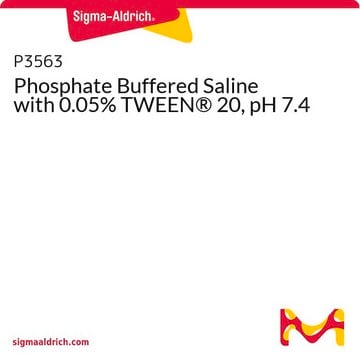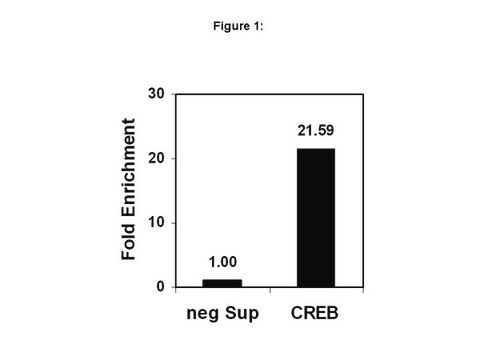MAB979
Anti-Enterovirus 71 Antibody, cross-reacts with Coxsackie A16, clone 422-8D-4C-4D
ascites fluid, clone 422-8D-4C-4D, Chemicon®
Sign Into View Organizational & Contract Pricing
All Photos(3)
About This Item
UNSPSC Code:
12352203
eCl@ss:
32160702
NACRES:
NA.41
Recommended Products
biological source
mouse
Quality Level
antibody form
ascites fluid
clone
422-8D-4C-4D, monoclonal
species reactivity
human
manufacturer/tradename
Chemicon®
technique(s)
immunofluorescence: suitable
isotype
IgG1
shipped in
wet ice
Specificity
Reacts with Enterovirus 71. Neutralizes enterovirus 71 BrCr strain at a titer of less than 1:14.
Immunogen
Epitope: cross-reacts with Coxsackie A16
Application
Indirect immunofluorescence at 1:1,000.
(Also cross-reacts with Coxsackie A16).
Optimal working dilutions must be determined by end user.
(Also cross-reacts with Coxsackie A16).
Optimal working dilutions must be determined by end user.
Research Category
Infectious Diseases
Infectious Diseases
Research Sub Category
Infectious Diseases - Viral
Infectious Diseases - Viral
This Anti-Enterovirus 71 Antibody, cross-reacts with Coxsackie A16, clone 422-8D-4C-4D is validated for use in IF for the detection of Enterovirus 71.
Physical form
Ascites fluid containing no preservatives.
Unpurified
Storage and Stability
Maintain for 1 year at -20°C from date of shipment. Aliquot to avoid repeated freezing and thawing. For maximum recovery of product, centrifuge the original vial after thawing and prior to removing the cap.
Analysis Note
Control
Enterovirus Control Slides, Catalogue Number 5066
Enterovirus Control Slides, Catalogue Number 5066
Other Notes
Concentration: Please refer to the Certificate of Analysis for the lot-specific concentration.
Legal Information
CHEMICON is a registered trademark of Merck KGaA, Darmstadt, Germany
Disclaimer
Unless otherwise stated in our catalog or other company documentation accompanying the product(s), our products are intended for research use only and are not to be used for any other purpose, which includes but is not limited to, unauthorized commercial uses, in vitro diagnostic uses, ex vivo or in vivo therapeutic uses or any type of consumption or application to humans or animals.
Storage Class
10 - Combustible liquids
wgk_germany
WGK 1
flash_point_f
Not applicable
flash_point_c
Not applicable
Certificates of Analysis (COA)
Search for Certificates of Analysis (COA) by entering the products Lot/Batch Number. Lot and Batch Numbers can be found on a product’s label following the words ‘Lot’ or ‘Batch’.
Already Own This Product?
Find documentation for the products that you have recently purchased in the Document Library.
Ming-Te Yeh et al.
PloS one, 6(11), e27082-e27082 (2011-11-10)
Enterovirus 71 (EV71) has emerged as a neuroinvasive virus responsible for several large outbreaks in the Asia-Pacific region while virulence determinant remains unexplored. In this report, we investigated increased virulence of unadapted EV71 clinical isolate 237 as compared with isolate
Combining multiplex reverse transcription-PCR and a diagnostic microarray to detect and differentiate enterovirus 71 and coxsackievirus A16.
Chen, Tsan-Chi, et al.
Journal of Clinical Microbiology, 44, 2212-2219 (2006)
Elizabeth A Caine et al.
Journal of virology, 90(19), 8592-8604 (2016-07-22)
Hand, foot, and mouth disease (HFMD) has spread throughout the Asia-Pacific region, affecting millions of young children, who develop symptoms ranging from painful blisters around their mouths and hands to neurological complications. Many members of the genus Enterovirus (family Picornaviridae)
Rei-Lin Kuo et al.
PloS one, 8(5), e63431-e63431 (2013-05-08)
Induction of type-I interferons (IFNs), IFN-α/β, is crucial to innate immunity against RNA virus infection. Cytoplasmic retinoic acid-inducible gene I (RIG-I)-like receptors, including RIG-I and melanoma differentiation-associated gene 5 (MDA5), are critical pathogen sensors for activation of type-I IFN expression
Immunological and biochemical characterization of coxsackie virus A16 viral particles.
Chong, P; Guo, MS; Lin, FH; Hsiao, KN; Weng, SY; Chou, AH; Wang, JR; Hsieh, SY; Su, IJ; Liu, CC
Testing null
Our team of scientists has experience in all areas of research including Life Science, Material Science, Chemical Synthesis, Chromatography, Analytical and many others.
Contact Technical Service







